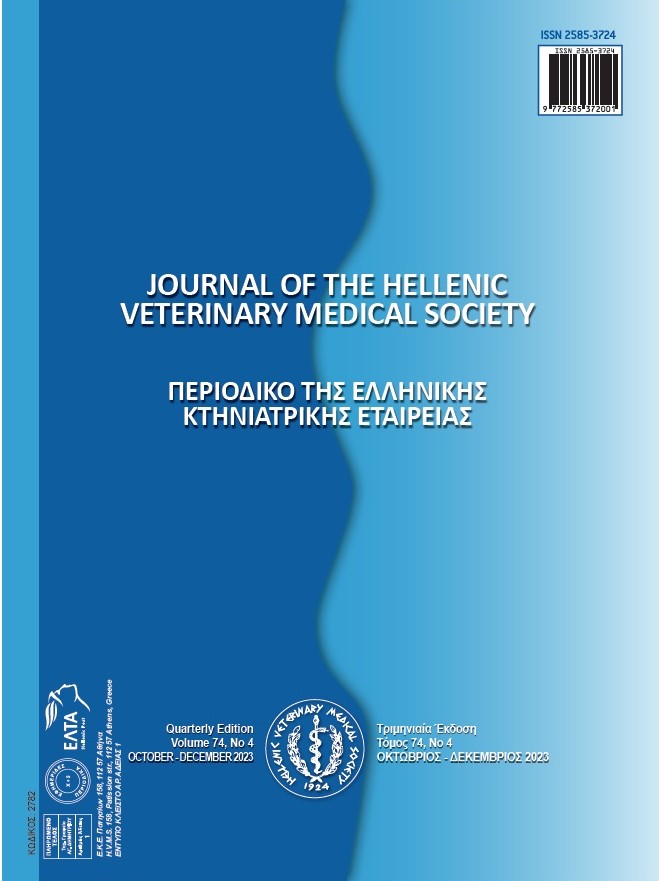Fasciolicidal efficacy comparison between Amaro (Chuquiraga weberbaueri) and triclabendazole in calves experimentally infected with Fasciola hepatica metacercaria
Περίληψη
The Cajamarca Valley is an endemic area for Fasciola hepatica in cattle. Despite demonstrated resistance to triclabendazole, the use of this anthelmintic remains prevalent. Therefore, constant efficacy evaluations of this active ingredient are necessary, along with the exploration of alternatives for parasite control. This study aimed to determine the effectiveness of Amaro (Chuquiraga weberbaueri) and triclabendazole in controlling F. hepatica in artificially infected calves. Three groups (T0, T1, and T2) of four weaned Holstein calves each were formed and infected with 200 metacercariae. The control group (T0) received no antiparasitic treatment, group T1 was dosed with lyophilized aqueous extract of C. weberbaueri (200 mg/kg, orally, for four consecutive days), and group T2 received a single dose of triclabendazole (12 mg/kg, orally). Clinical efficacy was assessed using the Egg Count Reduction Test, and absolute efficacy was determined through necropsy. The average clinical efficacy and absolute efficacy of C. weberbaueri were 46.70% (95% CI: 33.27 – 60.13) and 58.63% (95% CI: 45.24 – 72.02), respectively. In contrast, triclabendazole demonstrated a clinical efficacy of 25.00% (95% CI: 12.62 – 37.38) and an absolute efficacy of 66.22% (95% CI: 66.22 – 79.08). Both treatments proved insufficiently active against Fasciola hepatica in calves, falling short of the category of effective fasciolicides. Nevertheless, using C. weberbaueri could be considered an environmentally friendly option to reduce the parasite burden in cattle.
Λεπτομέρειες άρθρου
- Πώς να δημιουργήσετε Αναφορές
-
Chávez, V., Vargas Rocha, L., Rojas-Moncada, J., & Torrel, T. (2025). Fasciolicidal efficacy comparison between Amaro (Chuquiraga weberbaueri) and triclabendazole in calves experimentally infected with Fasciola hepatica metacercaria. Περιοδικό της Ελληνικής Κτηνιατρικής Εταιρείας, 76(1), 8697–8704. https://doi.org/10.12681/jhvms.37150
- Τεύχος
- Τόμ. 76 Αρ. 1 (2025)
- Ενότητα
- Research Articles

Αυτή η εργασία είναι αδειοδοτημένη υπό το CC Αναφορά Δημιουργού – Μη Εμπορική Χρήση 4.0.
Οι συγγραφείς των άρθρων που δημοσιεύονται στο περιοδικό διατηρούν τα δικαιώματα πνευματικής ιδιοκτησίας επί των άρθρων τους, δίνοντας στο περιοδικό το δικαίωμα της πρώτης δημοσίευσης.
Άρθρα που δημοσιεύονται στο περιοδικό διατίθενται με άδεια Creative Commons 4.0 Non Commercial και σύμφωνα με την άδεια μπορούν να χρησιμοποιούνται ελεύθερα, με αναφορά στο/στη συγγραφέα και στην πρώτη δημοσίευση για μη κερδοσκοπικούς σκοπούς.
Οι συγγραφείς μπορούν να καταθέσουν το άρθρο σε ιδρυματικό ή άλλο αποθετήριο ή/και να το δημοσιεύσουν σε άλλη έκδοση, με υποχρεωτική την αναφορά πρώτης δημοσίευσης στο J Hellenic Vet Med Soc
Οι συγγραφείς ενθαρρύνονται να καταθέσουν σε αποθετήριο ή να δημοσιεύσουν την εργασία τους στο διαδίκτυο πριν ή κατά τη διαδικασία υποβολής και αξιολόγησής της.




